Field test and review – Micro 600 down
I remember with great excitement the first time I grabbed my overnight pack, stuffed it full of all the hiking and camping gear that I owned and headed out into the great unknown. There is something really quite special about immersing yourself in nature and facing the elements with nothing but the pack on your back and the clothes you are wearing of course.
Like most people new to overnight hiking (pack carrying) I didn’t have the funds or the inclination to run out and purchase ultra-light gear for my first adventure. Who knows if I would even like it? So for my first few outings I lugged an 18kg + pack around with me with my big old sleeping bag and 3kg tent. It didn’t take many outings though before I was hooked so my priority was to reduce the weight of my pack. In my mind this could only be achieved by eliminating unnecessary items and reducing the size and weight of the items that I packed.
One of the largest items that I carried at the time was a sleeping bag that I also used for car camping. It was big and warm and consumed about a quarter of my 60 litre pack. Without a second thought I jumped on to eBay and searched for the smallest bag I could find. How cool, without much effort I found one that less than $100 and was so small it would pack down to fit into the palm of my hand. So I bought it.
A few days later I headed into the Lerderderg Gorge with my super cool sleeping bag, ready for a night close to nature. With tent set up and sleeping pad inflated I crawled into my sleeping bag for a relaxing night sleep. But sleep I did not. As I was so new to hiking I had completely failed to understand that sleeping bags actually came in different packed sizes for a reason. It has a lot to do with their insulative qualities. Basically, if you are buying a sleeping bag that costs less than $100 and fits in the palm of your hand you can safely assume that it won’t keep you very warm at night. Especially when the temperature drops ten degrees below the rating of +15 that is clearly labelled on the bag. I should also note that this sleeping bag weighed in at 1.8km. Lesson learnt, time to do some more research.
I am pleased to report that I now own a very sensible sleeping bag with an EN rating of -110C which is absolutely perfect for most conditions throughout Victoria. Unless you want to bury yourself deep in the snow.
As with most things you purchase in life it is impossible to find one product that does everything and this is especially true when it comes to sleeping bags. You can’t expect your bag to keep you warm in sub-zero temperatures and then not cook you when you are hiking in summer or spring. What you really need is a combination of bags to suit all seasons.
I was grateful to have recently been sent a Snowgum Micro Down 600 sleeping bag to review.
The Micro Down 600 is an ultra-lightweight and compact down sleeping bag designed with spring and summer hiking in mind. The EN Rating of the Micro Down 600 Sleeping Bag states it’s designed for +10°C with a Transition Limit of +7°C, pretty much the perfect spring/summer sleeping bag for the mild Australian Climate. The coldest night I’ve put this sleeping bag through was around the 6°C point during a recent hike to Mount Feathertop in the Victorian Alps. My shoulders were a bit cold as I didn’t sleep with thermals on, but even without a bag liner I certainly wasn’t uncomfortable pushing this sleeping bag beyond its thermal range.
Once zipped up and the hood draw cord pulled tight, the sleeping bag did exactly what it’s supposed to. It kept me warm, but not too warm.
Anything above 15°C and you might start to feel like you are in a slow-cooker, but luckily this bag can be zipped open all the way to open flat. This serves as a great blanket right up to temperatures where sleeping in a liner is warm enough. Another great feature of the Snowgum Micro Down 600 is that you can join two bags together in order to create a double sleeping bag. The downside to any sleeping bag with a full length zip is that the zips can leak some of your valuable heat making them not that suited to colder climates.

When I first unpacked the sleeping bag I was amazed at just how thin it was. You start to question how something this thin can possibly keep you warm. Down bags are a lot puffier than synthetic bags but not when you first unpack them. Just remember to give it a good shake before crawling in for a good night sleep.
As far as sleeping bags go, this one is really comfortable. Unlike one of my mummy shaped bags that hugs your every curve, it is wide enough around the knee area to move around a bit, which is essential if you’re anything like me and can’t stand sleeping on your back, but not so wide that it loses insulating properties or adds too much bulk when packed.
The Snowgum Micro Down 600 only comes in one size which does add to your pack weight if you are shorter and don’t need the extra length but the overall bag weight of 600g is so low it really won’t make much of a difference in the scheme of things.

The Snowgum Micro Down 600 comes with a stuff sack that houses your bag in a less than bulky package. The stuff sack can be further compressed if required (simply tighten a compression strap around the stuff sack) but the overall size of 14x23cm is so small that it easily squeezes into your pack.
A quick note on transporting and storing down bags. Down sleeping bag filling also contains a small amount of “small feathers” which assist in keeping the down loose and assists loft (the amount the bag fluffs up when taken out of the stuff sack). As with any down bag, transporting in the provided stuff sack ensures the down suffers minimal damage and allows the feather to puff up to maximum strength in a relatively short amount of time. If you do transport it in a compressed state, ensure you don’t store it this way. For long term storage use a large open weave sack.
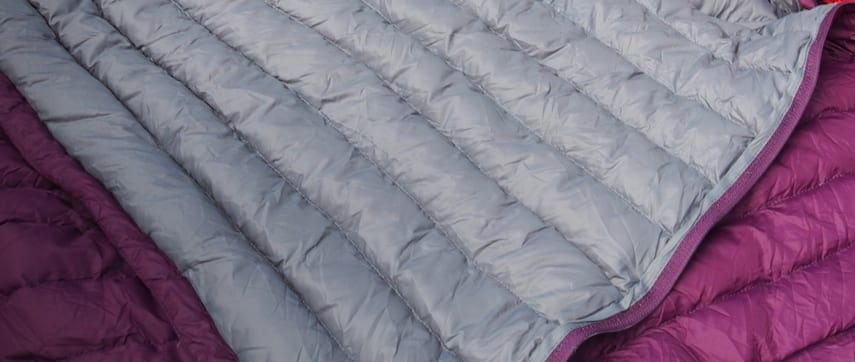
In the Snowgum Micro Down 600 the down is distributed around the bag in a series of channels or baffles that ensure you have the right amount of filling for each part of your body – eg more on top than the bottom and more around the chest than the legs. Whilst down is unrivaled for warmth to weight ratio and is resilient to compression it is not very effective when wet and will take some time to dry.
A sleeping bag is an important purchase since it will keep you warm and protect you from the elements. Weight, form, heat rating and reliability are all factors to consider when purchasing a bag. Understanding the basic features and getting a feel for how sleeping bag ratings work can help you select the right bag for your needs and keep you warm in the process. You can read more about how to choose the right sleeping bag here.
All and all the SNOWGUM Micro 600 Down Sleeping Bag is a great sleeping bag for mild climates and I would highly recommend it.
Buy direct from Snowgum for $299.95 (club price $149.95)
Features
- Downproof Nylon Fabric
- 90/10 Duck Down – 500 Loft
- DWR Water Repellency
- Zip down length and across feet, fully unzips to open flat
- Hood draw cord
- Internal draft tube for added warmth
- High quailty zip
- Supplied with a storage sack
- Rating/Season: Spring / Summer +10c
- Shape: Semi-Rectangular
Tech Specs
Material
- Outer Fabric: 20D 410T Tactel Nylon Downproof Nylon + Water Repellant Treatment
- Inner Lining: 20D 410T Tactel Nylon Downproof Nylon
- Fill Type: 90/10 duck down
- Fill Amount: 350g with 600 Loft
Dimensions:
- Length (including Hood): 215cm
- Length (from Shoulder): 183cm
- Width (at Shoulder): 75cm
- Width (at Feet): 44cm
- Packaged Size: 14cm Diameter, 23cm Length
- Weight (including Stuff Sac): 600gm
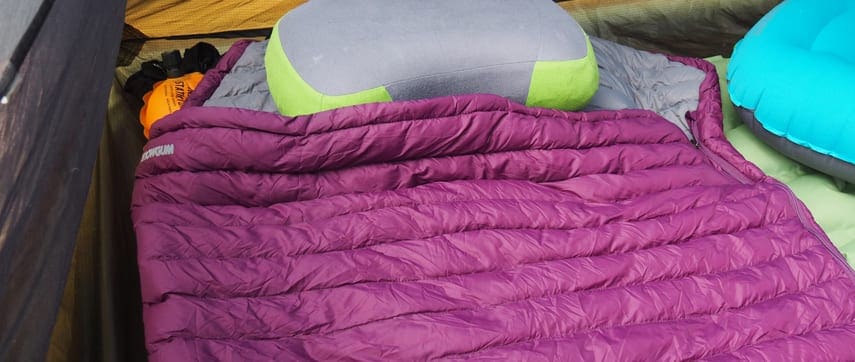
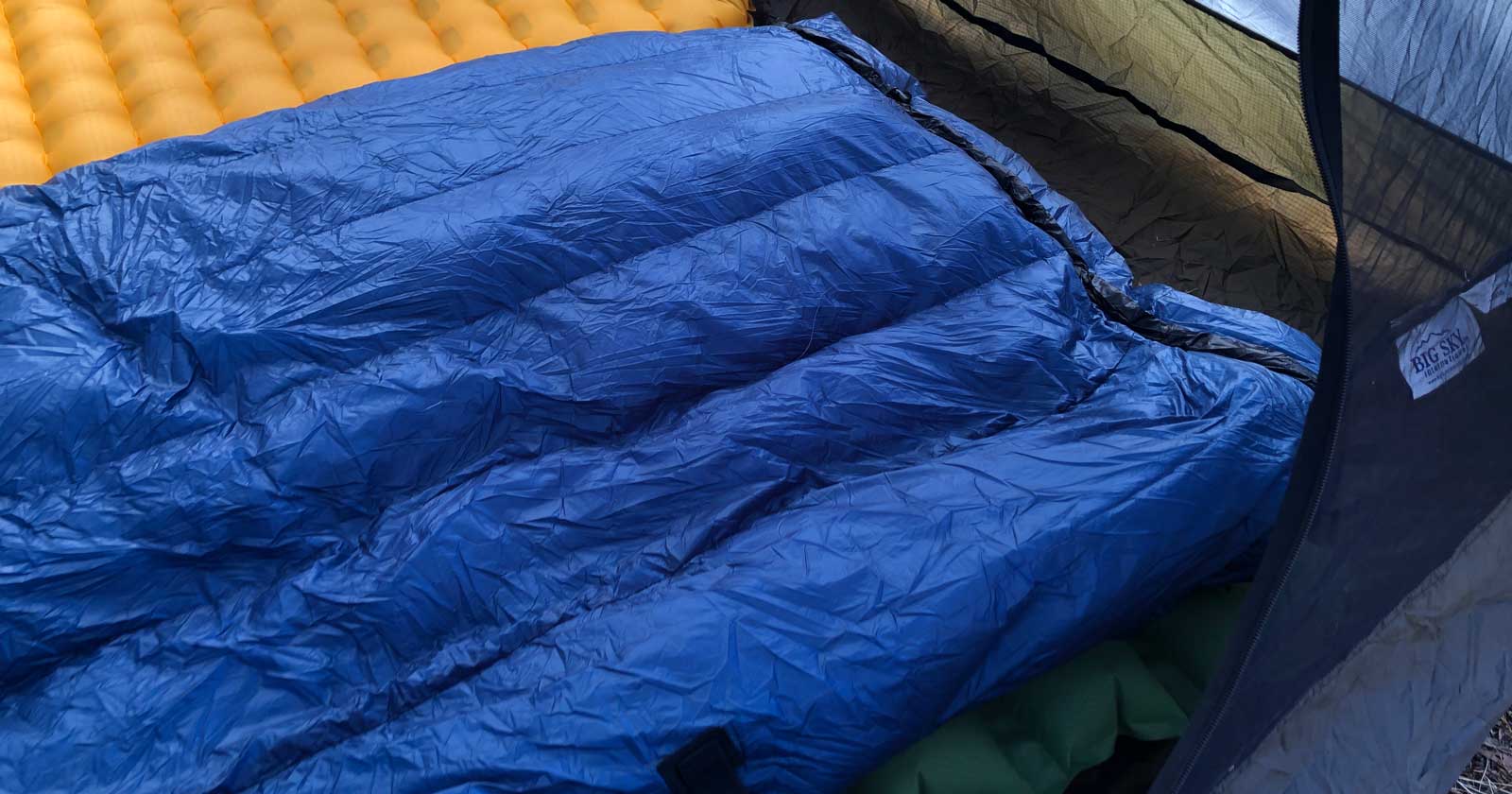
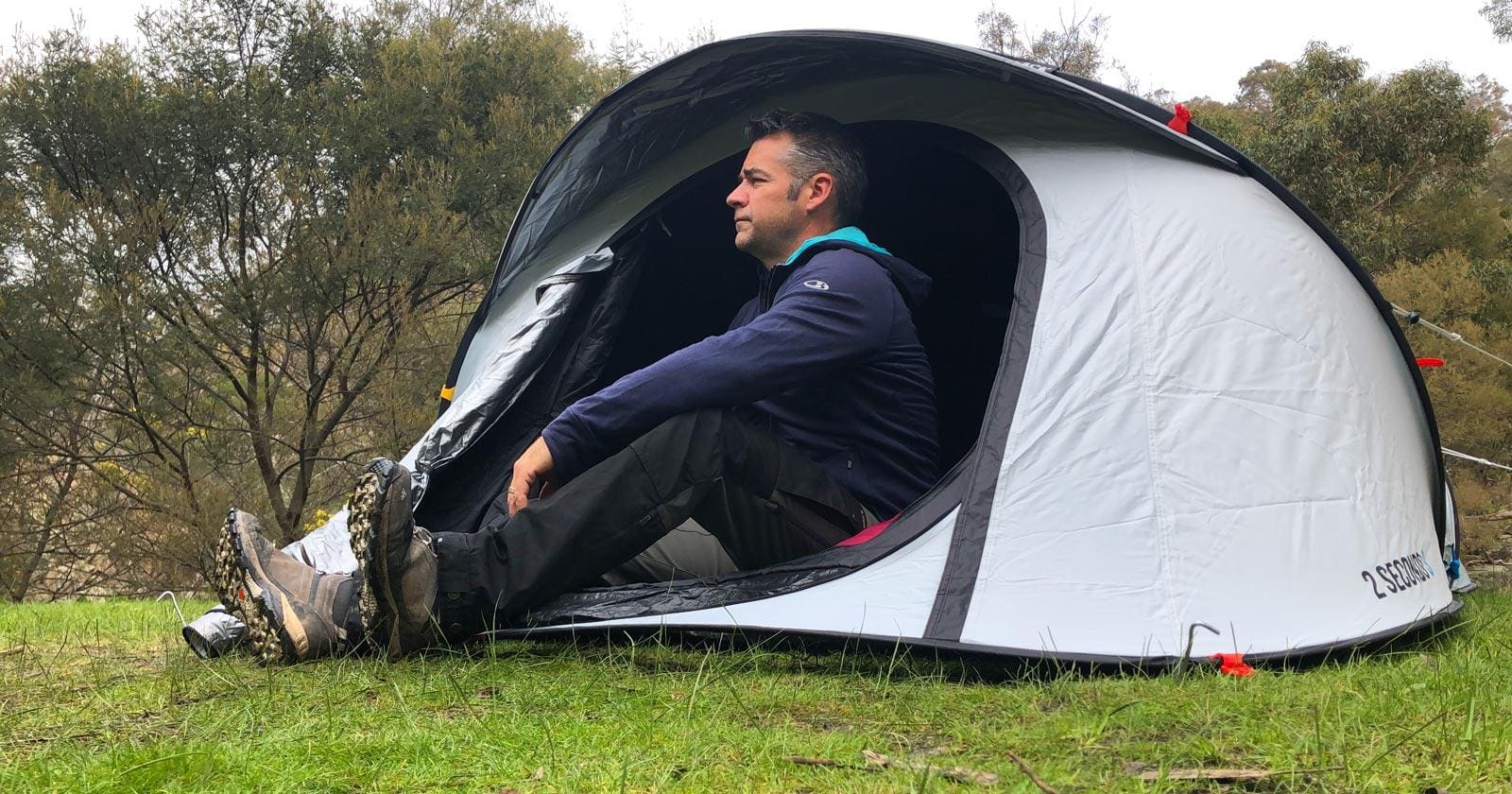
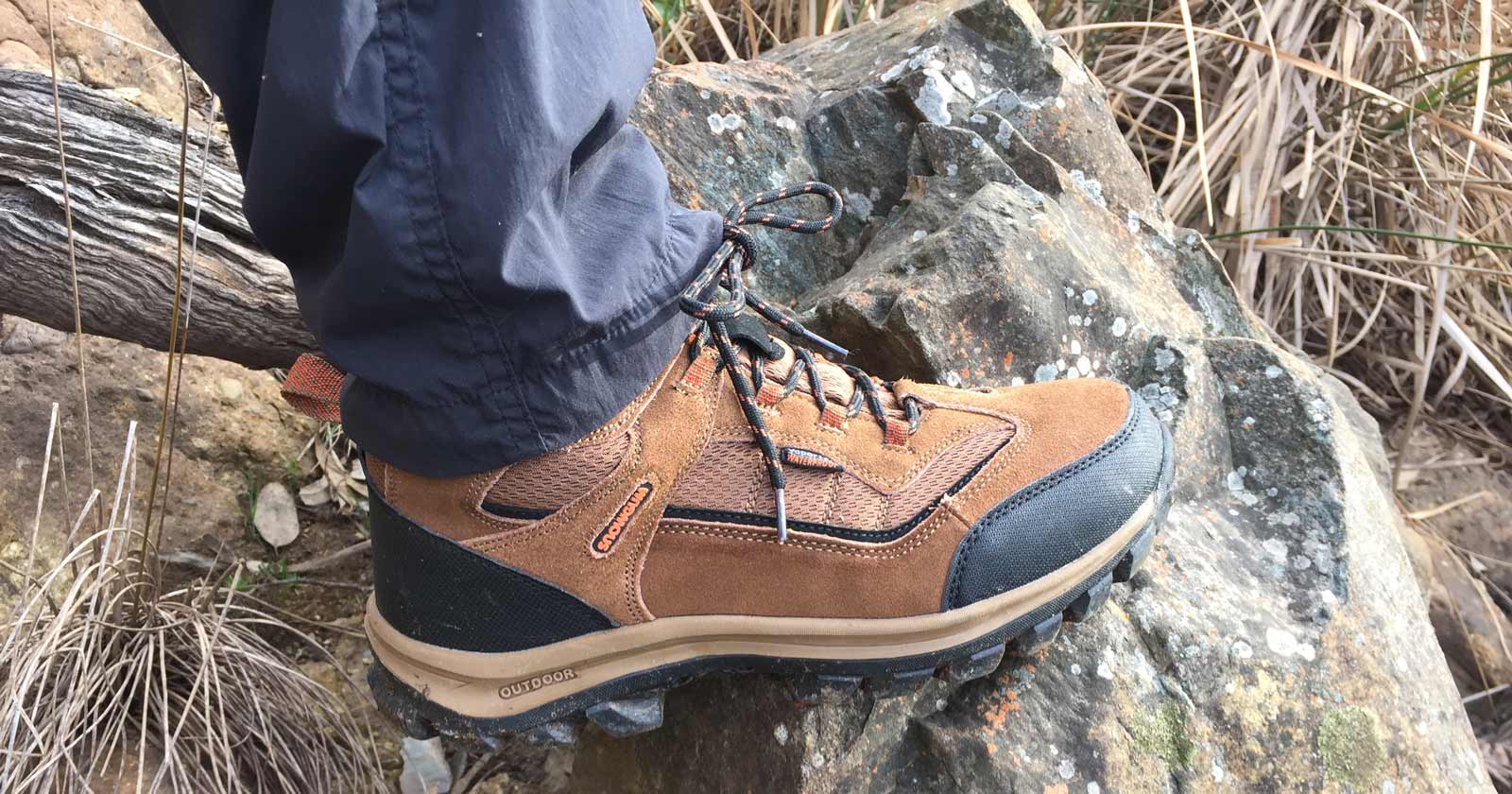



Daniela Weinreich
What’s the pillow?
“Sea to Summit” – Aeros.
I’ve been trying to find the right sleeping bag for my swag that also I can easily to put in washing machine.
Helena Javni generally a down sleeping bag needs to be hand washed otherwise the down will clump and ruin the bag